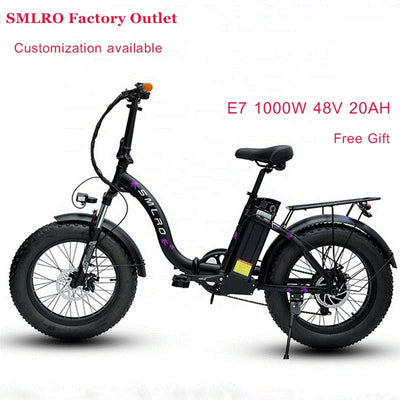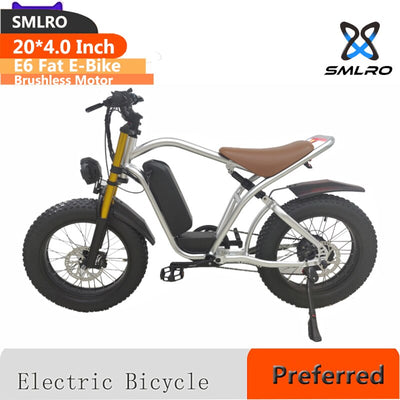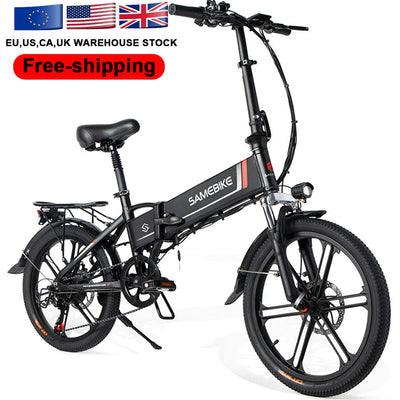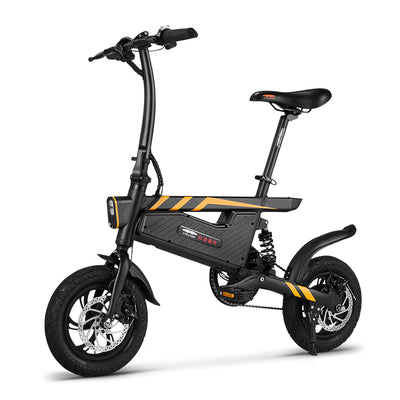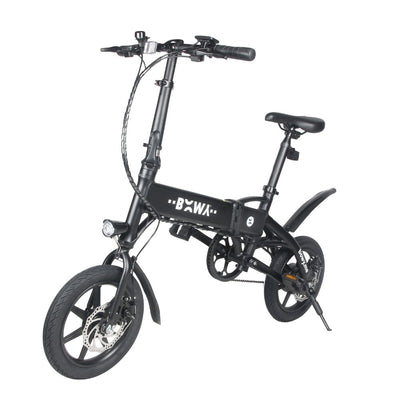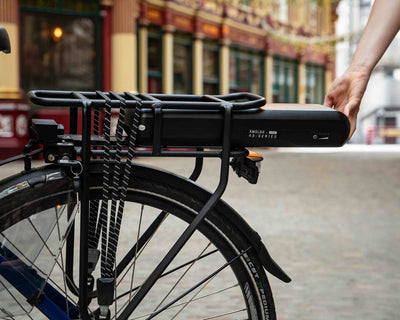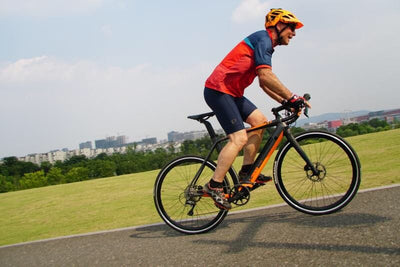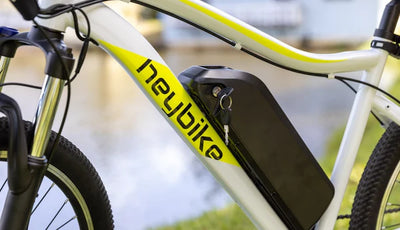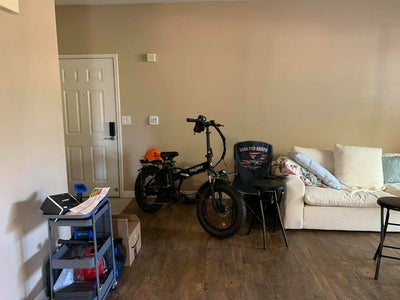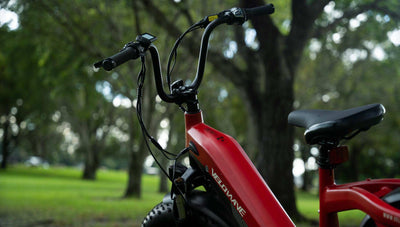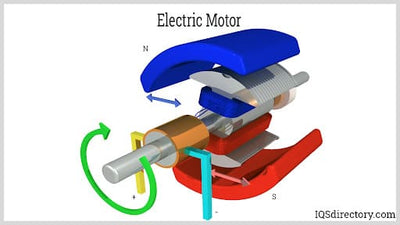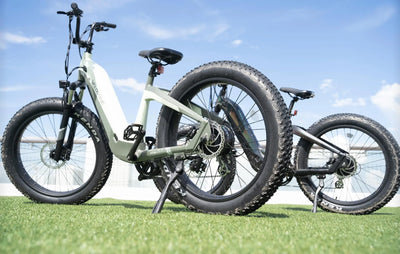HOW TO FIND THE E-BIKE THAT’S RIGHT FOR YOU
Posted by Tom Lee on
A Guide to Understanding E-bike Motors and Their Features
E-bikes are growing increasingly popular off-late, with several new launches across various price points that cater to all types of users. However, with more options, consumers are often left confused when choosing an e-bike with specs that best suits their requirements.
One of the key concerns among new buyers is the size of the e-bike motor, with different sizes suited for different use cases, such as sportives, long-distance cycling,commuting, or just leisure riding. In this article, we go over some electric bike motors and when they are best used to help you make more informed decisions.
What Are the Options?
You can find a wide range of motor sizes for electric bikes - right from tiny 250W and 350W motors to overpowered options with 10,000+ watts.
While 250 to 500W are the most commonly used motor sizes for electric bikes, they may not be suitable for all users, particularly those who ride odd and rocky terrains on a regular basis. That said, when it comes to motor sizes for e-bikes, bigger isn’t always better. There are numerous engineering and safety considerations that cap the ideal e-bike motor sizes at 500W.
Let's look at all the availableelectric bike motor options in detail:
1. 250W Motors
As the smallest size motors for electric bikes, 250 watts generally power flat land cruising bikes. These bikes are likely to struggle climbing hills in the absence of assisted pedaling, though mid-drive motors offer better hill-climbing performance as compared to hub motors at such small sizes.
A 250W size motor may suit light and heavy riders alike as long as the terrain is flat. But the acceleration will be slow to pick up speed if the rider is heavy.
Motors in this range are also limited to a speed of 15-20 mph. At speeds higher than this, it gets difficult to overcome wind resistance without the help of additional power.
2. 350W – 500W Motors
An increase in the size of the motor delivers improved acceleration. While 250W motors make the e-bike sluggish at times, motors reaching close to 500W can pull much quickly.
Light riders are likely to feel a huge difference with a motor in this size range. Heavier riders, however, may not find it too different on flat land.
A 500W motor will perform much better for light riders on hills as well. This size is generally the minimum power an e-bike needs to surpass 20mph of speed.
3. 750W – 1000W Motors
Electric bike motors in this size range deliver great power, impressing lightweight riders with an exciting acceleration off the line. These motors also give a good hill-climbing performance.
Heavier riders find 750W motors consistent for hills and enjoyable for flat land performance. Most heavy riders would get a pleasant performance with a 1000W motor.
Motors in this range and above bring certain safety concerns, especially in the absence of dedicated cycling lanes. Going above 20mph on sidewalks or crowded streets is definitely dangerous, which is why some countries have already restricted e-bikes of this range.
4. 1000W+ Motors
At above 1000W, the motor starts leaving the bicycle area and approaches the light electric motorcycle level.
Electric bikes powered by a 1.5kW hub or mid-drive motor deliver extreme power that could drive the heaviest riders up the highest hills. However, mid-drive motors with such huge sizes require special sprockets and chains to handle large amounts of power and torque.
Choosing an E-bike with a Motor to Match your Needs
E-bike motors come in several sizes - the right choice for you depends on your personal needs and preferences. If you are a recreational rider, you should go for a 250W motor at the minimum but can also choose a 500W if you enjoy the power it offers. However, 250W is sufficient for shorter rides limited to about 10-15 miles.
For riders who like to explore longer distances, a bigger motor with up to 500W is a great option. If your rides go up to 20, 30, 40 miles, anything above 350W is a good choice. E-bikes used for commuting should use 400-500W motors to help reach the destination quickly. With these sizes, you can hit about 20 miles per hour in full throttle. With pedal assist, the e-bike should hit 28mph on a 500W motor.
A 250W motor is a perfect choice for people who want to use their e-bike as a fun aerobic exercise. However, those looking formountain biking should use a 500-700W motor to tackle rough terrains without exerting themselves too much. Any kind of mountain biking or off-roading requires a motor size of 500W or bigger, preferably a mid-drive type for additional torque.
Note that the legal wattage limit allowed for e-bikes on the road varies in different countries. Higher wattages may be permitted on private roads and trails. You MUST check your local laws to ensure you ride legally and safely.
In Closing
Electric bikes are on the fast track to becoming a popular mode of transportation as they can lower your individual carbon footprint. Moreover, they add significant value to your life by ensuring optimal health and fitness overall.
Nevertheless, it's best to take sufficient time to research and identify the e-bike motor that best works for you. By factoring in your lifestyle, style of riding, and the roads you most frequent, you can be sure to pick a motor - and, by extension, an e-bike - that truly meets your needs.
About the Author:
Graeme McLaughlin

Graeme is the Marketing Head at Evelo, a data nerd, and an E-bike enthusiast who is always excited about testing new bikes. After years of riding and coming from a career in cycle sales, he is still passionate about bicycles. Based in Vancouver, he enjoys riding everything from solo adventures in the mountains to big social night rides.

